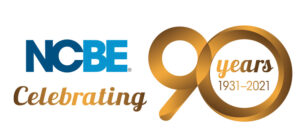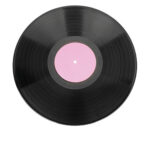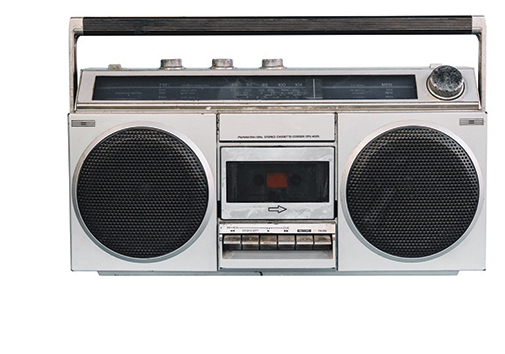NCBE Testing Milestones
Summer/Fall 2021 (Vol. 90, Nos. 2-3)
This article originally appeared in The Bar Examiner print edition, Summer/Fall 2021 (Vol. 90, Nos. 2–3), pp. 24–26.
In 1969, NCBE established a Committee on Bar Examinations to study the bar examining process. The committee discussed the possibility of creating a uniform multiple-choice bar examination that could help reduce the grading burden for jurisdictions. From the subsequent launch of the Multistate Bar Examination (MBE) three years later, to launch of the Multistate Professional Responsibility Examination (MPRE) in 1980, the Multistate Essay Examination (MEE) in 1988, and the Multistate Performance Test (MPT) in 1997—and subsequent developments in the near–last quarter-century since then—below are milestones in NCBE’s testing program over the decades.
The 1970s

1970
|
- NCBE’s Board of Managers establishes a standing bar examination committee to begin developing a six-hour multiple-choice bar examination. NCBE receives a grant from the American Bar Foundation to help cover the costs of developing the exam.
- Boards of bar examiners, law school deans, and law school faculty are surveyed to gather suggestions for subject matter coverage. Drafting committees, made up of bar examiners and law school faculty, are formed, and NCBE contracts with the Educational Testing Service (ETS) to provide technical support for the exam.
|
1971
|
|
1972
|
- The MBE is administered for the first time to a total of 4,955 examinees from 19 jurisdictions. The exam contains 200 scored questions in five subject areas: Contracts, Criminal Law, Evidence, Real Property, and Torts. ETS scores and provides statistics on the exam.
|
1974
|
- The MBE is equated for the first time, using a linear equating model.
|
1975
|
- Constitutional Law is added as an MBE subject.
|
1976
|
- Discussions of a multistate professional responsibility examination begin. Development of the exam is supported by ACT.
|
The 1980s

1980
|
- The MPRE is administered for the first time to approximately 4,000 examinees from six jurisdictions. Questions are based on the ABA Model Code of Professional Responsibility.
- NCBE begins studying performance testing, co-sponsoring studies by the California Committee of Bar Examiners.
|
1982
|
- An MBE content validity study is completed.
- NCBE begins developing an essay examination.
|
1983
|
- MPRE questions are now based on both the ABA Model Code of Professional Responsibility and the ABA Model Rules of Professional Conduct.
|
1984
|
- MBE development, scoring, and equating moves from ETS to ACT.
|
1988
|
- The MEE is administered for the first time in six jurisdictions. It contains six questions (two 50-minute questions and four 20-minute questions) drawn from the six MBE subjects and three additional subjects (Civil Procedure; Corporations; and Wills, Estates, and Trusts). ACT provides technical support.
|
The 1990s

1990
|
- NCBE conducts surveys and holds meetings with jurisdictions about MEE subject coverage.
|
1992
|
- An MBE content validity study is completed.
|
1993
|
- MEE subject matter coverage is changed so that there is no overlap with the MBE. MEE subjects are now Business Organizations (Agency & Partnership and Corporations); Conflict of Laws; Commercial Transactions (Negotiable Instruments, Sales, and Secured Transactions); Family Law; Federal Civil Procedure; and Wills, Estates, and Trusts (Decedents’ Estates and Trusts & Future Interests). Seven 30-minute MEE questions are now offered to jurisdictions for each administration.
- NCBE conducts a pilot study on performance testing. Based on the results of the study and jurisdiction input, NCBE’s Long Range Planning Committee recommends the creation of a performance test.
|
1997
|
- The MPT is administered for the first time in four jurisdictions. ACT provides technical support.
|
1999
|
- MPRE questions are now based exclusively on the ABA Model Rules of Professional Conduct.
|
The 2000s

2002
|
- The American Bar Association (ABA), the Association of American Law Schools (AALS), and the Conference of Chief Justices (CCJ) discuss the feasibility and merit of a uniform bar exam. Representatives from the ABA Section of Legal Education and Admissions to the Bar, the AALS, the CCJ, and NCBE form a Joint Working Group on Legal Education and Bar Admissions.
|
2003
|
- NCBE surveys jurisdictions about MEE subject-matter coverage and begins studying the possibility of adding MBE subjects back to the MEE.
|
2005
|
- Equating for the MBE changes from a linear model to a three-parameter item-response-theory model.
- NCBE takes over test development and production for the MEE and MPT from ACT.
- Pretesting of MPRE questions begins.
|
2007
|
- Pretesting of MBE questions begins.
- MEE subject matter coverage is changed to include MBE topics; Article 2 (Sales) is tested under the Contracts test specifications rather than the Uniform Commercial Code. Nine MEE questions are now offered to jurisdictions for each administration.
- NCBE takes over MPRE test development from ACT.
|
2009
|
- NCBE takes over MPRE equating from ACT.
- NCBE takes over MBE test development from ACT.
|
The 2010s

2011
|
- NCBE takes over MBE scoring and equating from ACT.
- The Uniform Bar Exam (UBE) is administered for the first time in two jurisdictions.
|
2012
|
- A job analysis study is completed by Applied Measurement Professionals Inc. on behalf of NCBE to describe the job activities of newly licensed lawyers.
|
2013
|
- The Law School Admission Council (LSAC) replaces ACT as the contractor for registration and administration of the MPRE. NCBE takes over ADA decisions, scoring, and score reporting for the MPRE.
|
2014
|
- The number of MEE questions offered is reduced from nine to six.
|
2015
|
- Civil Procedure is added as an MBE subject.
- Negotiable Instruments is removed as an MEE subject.
|
2017
|
- The number of MBE pretest questions is increased from 10 to 25 of the 200 total questions on each form.
|
2018
|
- NCBE appoints a Testing Task Force charged with undertaking a three-year study to ensure that the bar examination continues to test the knowledge, skills, and abilities required for competent entry-level legal practice in the 21st century.
|
2021
2021
|
- NCBE’s Board of Trustees approves the Testing Task Force’s recommendations for the next generation of the bar examination. Implementation of the new exam will take four to five years.
|
Contact us to request a pdf file of the original article as it appeared in the print edition.













